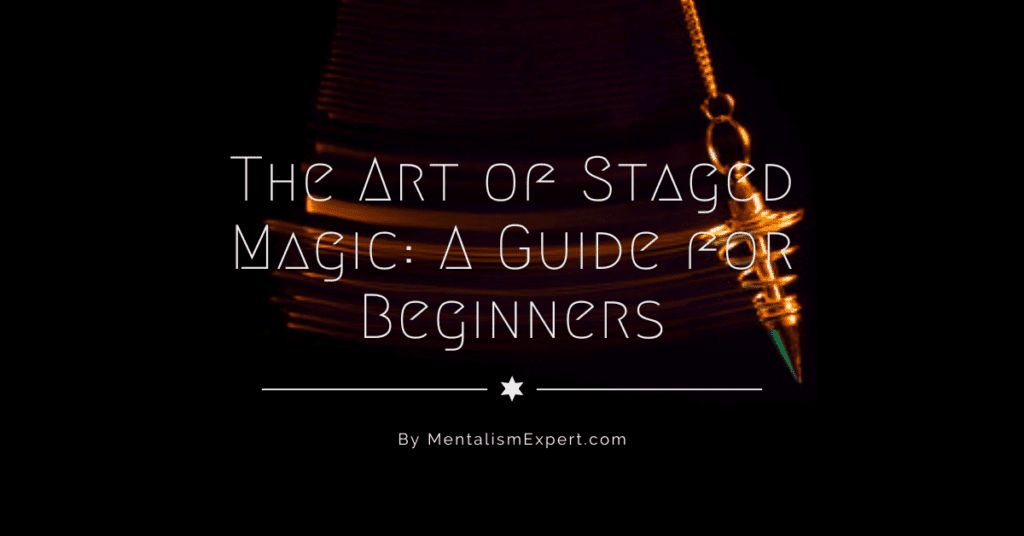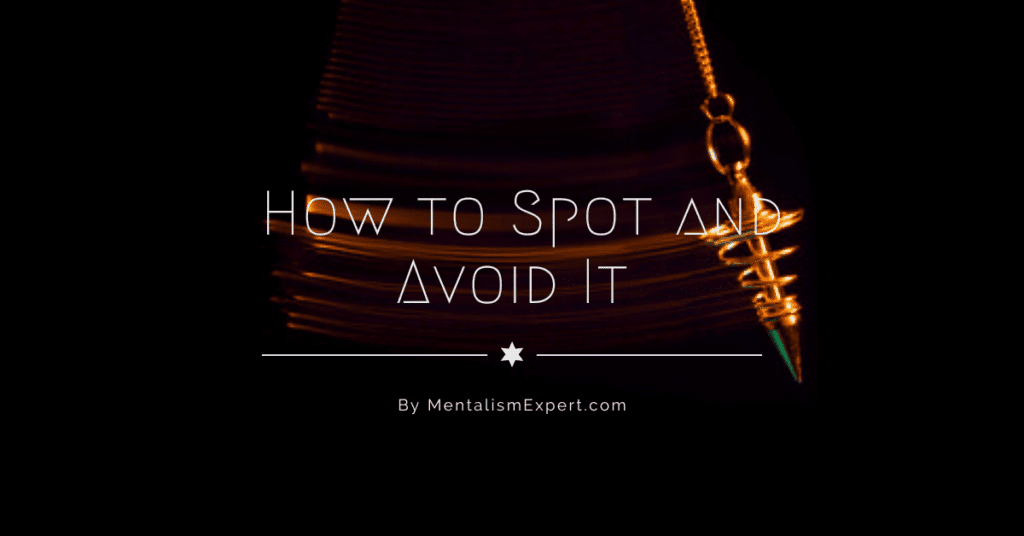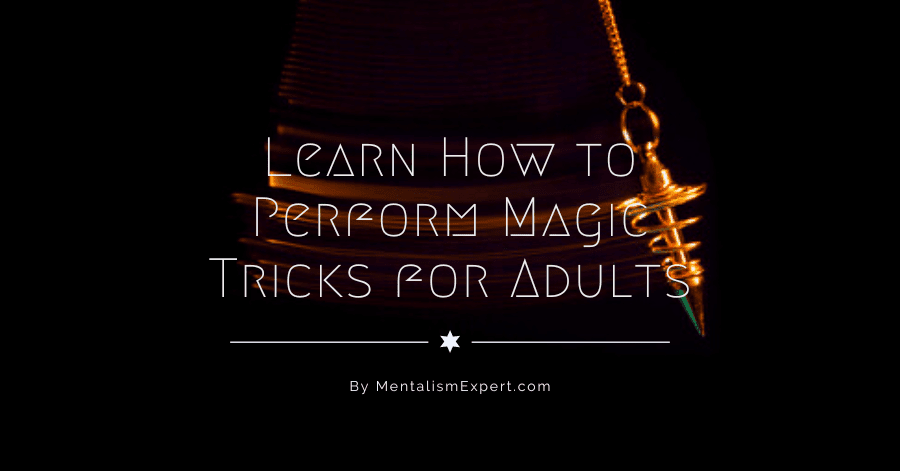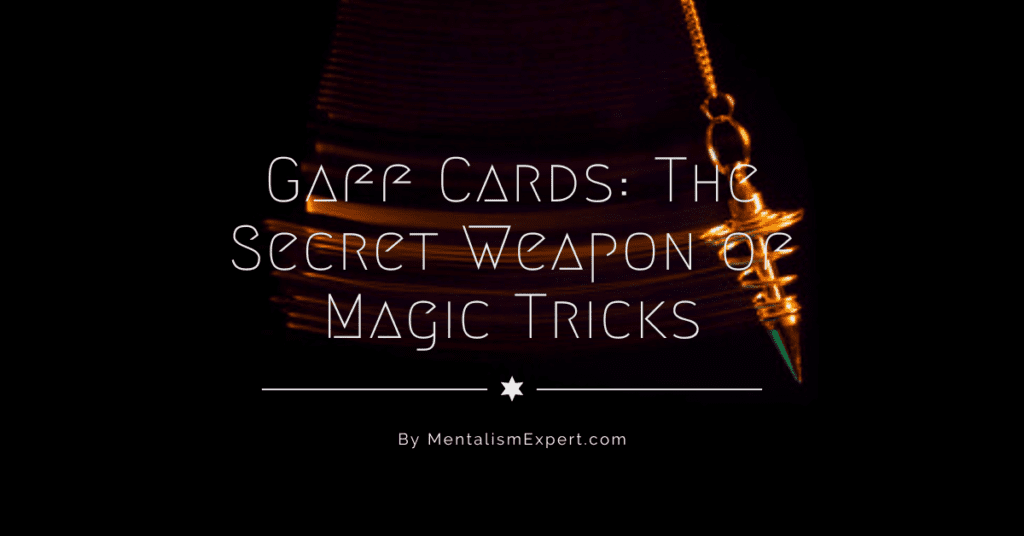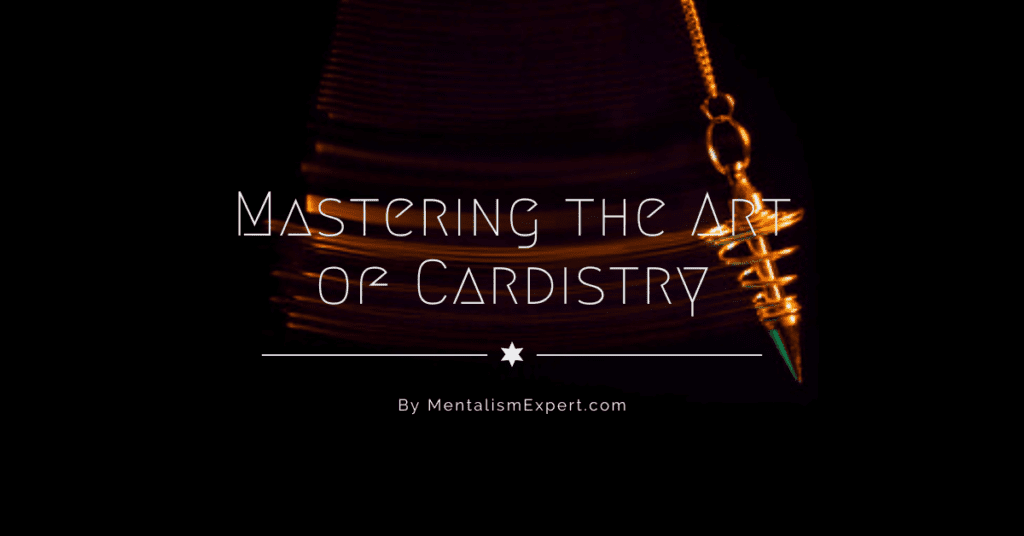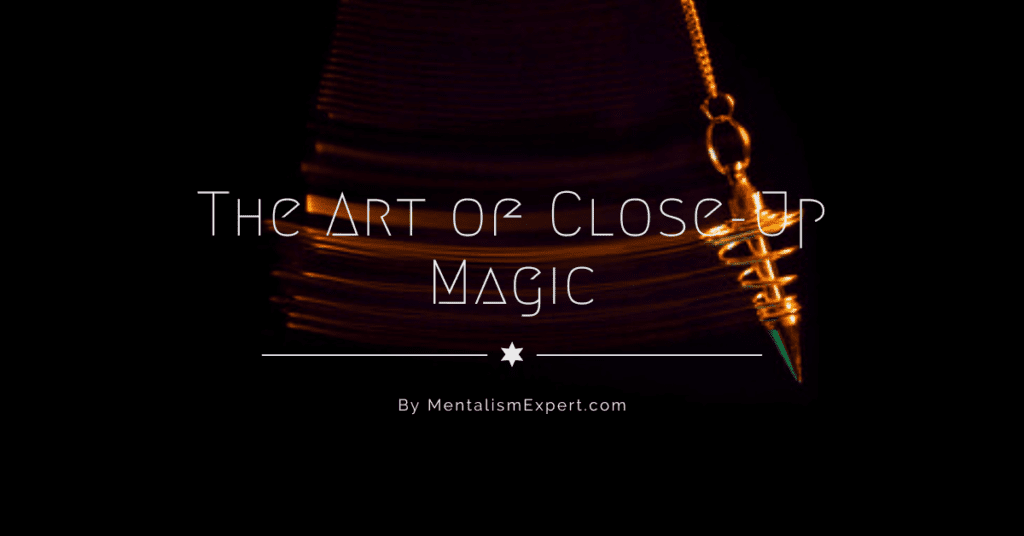Misdirection in magic refers to the act of directing an audience’s attention away from the true method of a trick. It is a way for magicians to control the audience’s perception of reality, creating the illusion of something happening that is not actually occurring. Misdirection can take many forms, including verbal distractions, physical movements, changes in lighting and stage design, and more. By using misdirection, magicians are able to surprise and engage their audience, making their tricks appear more magical and mysterious.
Misdirection is an essential element of many magic tricks, as it allows the magician to perform the trick without the audience realizing how it is done. This element of surprise and deception is what makes magic so captivating and enjoyable to watch. Misdirection can be used in a variety of magic tricks, from card tricks and coin tricks to illusions and mentalism. By using misdirection, magicians are able to keep their audience guessing and entertained.
Key Takeaways
- Misdirection is a fundamental principle in magic that involves directing an audience’s attention away from the true method of a trick.
- Misdirection can be used in a variety of magic tricks, including card tricks, coin tricks, illusions, mentalism, and sleight of hand.
- Misdirection is an essential element of many magic tricks, as it allows the magician to perform the trick without the audience realizing how it is done, creating moments of surprise and wonder.
- Misdirection can take many forms, including verbal distractions, physical movements, changes in lighting and stage design, and false explanations.
- Misdirection requires practice and skill to execute effectively.
- Misdirection is a way for magicians to manipulate the audience’s perception of reality, creating the illusion of something happening that is not actually occurring.
So, How Does Misdirection in Magic Work?
Misdirection in magic works by directing an audience’s attention away from the true method of a trick. This is done through various techniques, such as verbal distractions, physical movements, changes in lighting and stage design, and more. By focusing the audience’s attention on something other than the true method of the trick, the magician is able to perform the trick without the audience realizing how it is done. This element of surprise and deception is what makes magic so captivating and enjoyable to watch.
One common way that misdirection is used in magic is through the use of verbal distractions. A magician may use clever patter or dialogue to draw the audience’s attention away from the trick, allowing them to perform the trick without being noticed. Physical movements can also be used to misdirect the audience, such as waving the hands or making a loud noise to distract the audience’s attention. Changes in lighting and stage design can also be used to misdirect the audience, such as by using bright lights or sudden movements to distract the audience’s attention.
Overall, misdirection in magic works by manipulating the audience’s perception of reality, creating the illusion of something happening that is not actually occurring. By using misdirection effectively, a magician is able to perform their tricks with greater impact and surprise, keeping their audience entertained and amazed.
How To Use Misdirection in Magic?
Misdirection is used in magic to direct an audience’s attention away from the true method of a trick, creating the illusion of something happening that is not actually occurring. It is an essential element of many magic tricks, as it allows the magician to perform the trick without the audience realizing how it is done. This element of surprise and deception is what makes magic so captivating and enjoyable to watch.
There are many ways that misdirection can be used in magic, including:
- Verbal distractions: A magician may use clever patter or dialogue to draw the audience’s attention away from the trick, allowing them to perform the trick without being noticed.
- Physical movements: A magician may use physical movements such as waving their hands or making a loud noise to distract the audience’s attention.
- Changes in lighting and stage design: A magician may use bright lights or sudden movements to distract the audience’s attention and misdirect them.
- False explanations: A magician may offer a false explanation for a trick, such as saying that a particular object is responsible for the trick when in reality, it is not.
By using these techniques effectively, a magician is able to perform their tricks with greater impact and surprise, keeping their audience entertained and amazed.
Types of Misdirection Tricks in Magic
Card tricks
Card tricks often use misdirection to hide the true method of the trick. For example, a magician may use verbal distractions or physical movements to distract the audience’s attention while secretly switching out a card.
Coin tricks
Coin tricks can also use misdirection to hide the true method of the trick. For example, a magician may use verbal distractions or physical movements to distract the audience’s attention while secretly switching out a coin.
Illusions
Illusions often rely on misdirection to create the illusion of something happening that is not actually occurring. For example, a magician may use verbal distractions or physical movements to distract the audience’s attention while secretly moving an object.
Mentalism
Mentalism tricks often use misdirection to hide the true method of the trick. For example, a magician may use verbal distractions or physical movements to distract the audience’s attention while secretly gathering information about their thoughts or intentions.
Sleight of hand
Sleight of hand tricks use misdirection to hide the true method of the trick. For example, a magician may use verbal distractions or physical movements to distract the audience’s attention while secretly performing a move with their hands.
Overall, misdirection is an essential element of many magic tricks, and it can be used in a variety of ways to create the illusion of something happening that is not actually occurring.
How to Practice Misdirection in Magic?
Misdirection is an essential element of many magic tricks, and it requires practice and skill to execute effectively. Here are some tips for practicing misdirection in magic:
- Start small: Practice misdirection with simple tricks before moving on to more complex ones. This will help you develop your skills and become more comfortable with using misdirection.
- Pay attention to your audience: Observe how your audience reacts to your misdirection techniques and use this information to improve your performance.
- Use various techniques: Experiment with different types of misdirection, such as verbal distractions, physical movements, and changes in lighting and stage design, to find what works best for you.
- Practice in front of a mirror: Watch yourself perform a trick in front of a mirror and pay attention to your body language and movements. This can help you identify areas where you can improve your misdirection techniques.
- Get feedback: Ask friends or family to watch you perform a trick and give you feedback on your misdirection techniques. This can help you identify areas where you can improve and become more effective at misdirection.
Overall, practicing misdirection in magic requires patience and dedication. With practice, you can develop your skills and learn how to become a mentalist and get more comfortable with using misdirection to create powerful and memorable magic tricks.
7 Tips for Using Misdirection in Magic
Here are seven tips for using misdirection in magic:
- Use verbal distractions: Clever patter or dialogue can be an effective way to distract the audience’s attention and misdirect them.
- Use physical movements: Waving your hands or making a loud noise can distract the audience’s attention and allow you to perform a trick without being noticed.
- Use changes in lighting and stage design: Bright lights or sudden movements can distract the audience’s attention and misdirect them.
- Offer false explanations: Giving a false explanation for a trick can mislead the audience and help you perform the trick without being noticed.
- Use sleight of hand: Sleight of hand tricks involve secretly manipulating objects with your hands, and they can be used to misdirect the audience.
- Use props: Props can be used to distract the audience’s attention and misdirect them.
- Practice: Practice is key to mastering misdirection techniques. Practice in front of a mirror or with friends and family to improve your skills and become more comfortable with using misdirection. You can also read some books on mentalism to deepen your knowledge.
Overall, these tips can help you effectively use misdirection in your magic tricks, creating moments of surprise and wonder for your audience.
Conclusion
In conclusion, misdirection is a fundamental principle in magic that involves directing an audience’s attention away from the true method of a trick. It is a way for magicians to control the audience’s perception of reality, creating the illusion of something happening that is not actually occurring. Misdirection can be used in a variety of magic tricks, including card tricks, coin tricks, mind reading tricks, illusions, mentalism, and sleight of hand.
By using misdirection effectively, a magician is able to perform their tricks with greater impact and surprise, keeping their audience entertained and amazed. With practice and dedication, anyone can learn to use misdirection in their magic tricks, creating powerful and memorable performances.
FAQ
What is Covert Misdirection?
Covert misdirection is a type of misdirection that is subtle and covert, meaning it is not noticeable or apparent to the audience. Covert misdirection involves directing the audience’s attention away from the true method of a trick without them realizing it. It is often used in magic tricks to create the illusion of something happening that is not actually occurring. Covert misdirection can take many forms, such as subtle hand movements or small gestures that are not immediately noticeable by the audience.
It is an advanced technique that requires skill and practice to execute effectively, as it requires the magician to be subtle and discreet in their misdirection efforts.
What is Overt Misdirection?
Overt misdirection is a type of misdirection that is more obvious and apparent to the audience. It involves directing the audience’s attention away from the true method of a trick in a more noticeable way. Overt misdirection can take many forms, such as verbal distractions, physical movements, and changes in lighting and stage design. It is often used in magic tricks to create the illusion of something happening that is not actually occurring.
Unlike covert misdirection, overt misdirection is more noticeable and apparent to the audience, making it a less subtle technique. However, when used effectively, overt misdirection can still be an effective tool for creating surprise and wonder in magic tricks.
How do you misdirect someone?
To misdirect someone, you can use a variety of techniques to divert their attention away from what you are really doing. This can involve using verbal distractions, such as engaging them in conversation or using clever patter to draw their attention away. You can also use physical movements, such as waving your hands or making a loud noise, to distract their attention. Changes in lighting and stage design can also be used to misdirect someone, such as by using bright lights or sudden movements to distract their attention.
Overall, misdirection involves manipulating someone’s perception of reality by directing their attention away from the true method of a trick, creating the illusion of something happening that is not actually occurring.
How do I learn misdirection?
To learn misdirection, you can start by practicing with simple magic tricks and gradually moving on to more complex ones. Pay attention to how your audience reacts to your misdirection techniques and use this information to improve your performance. Experiment with different types of misdirection, such as verbal distractions, physical movements, and changes in lighting and stage design, to find what works best for you. Practice in front of a mirror to watch yourself perform and pay attention to your body language and movements. Ask friends or family to watch you perform and give you feedback on your misdirection techniques.
With practice and dedication, you can develop your skills and become more comfortable with using misdirection to create powerful and memorable magic tricks.
How do you master the art of misdirection?
To master the art of misdirection, it is important to practice and develop your skills over time. Start by practicing with simple magic tricks and gradually moving on to more complex ones. Pay attention to how your audience reacts to your misdirection techniques and use this information to improve your performance. Experiment with different types of misdirection, such as verbal distractions, physical movements, and changes in lighting and stage design, to find what works best for you. Practice in front of a mirror to watch yourself perform and pay attention to your body language and movements.
Ask friends or family to watch you perform and give you feedback on your misdirection techniques. With patience and dedication, you can master the art of misdirection and use it to create powerful and memorable magic tricks.



